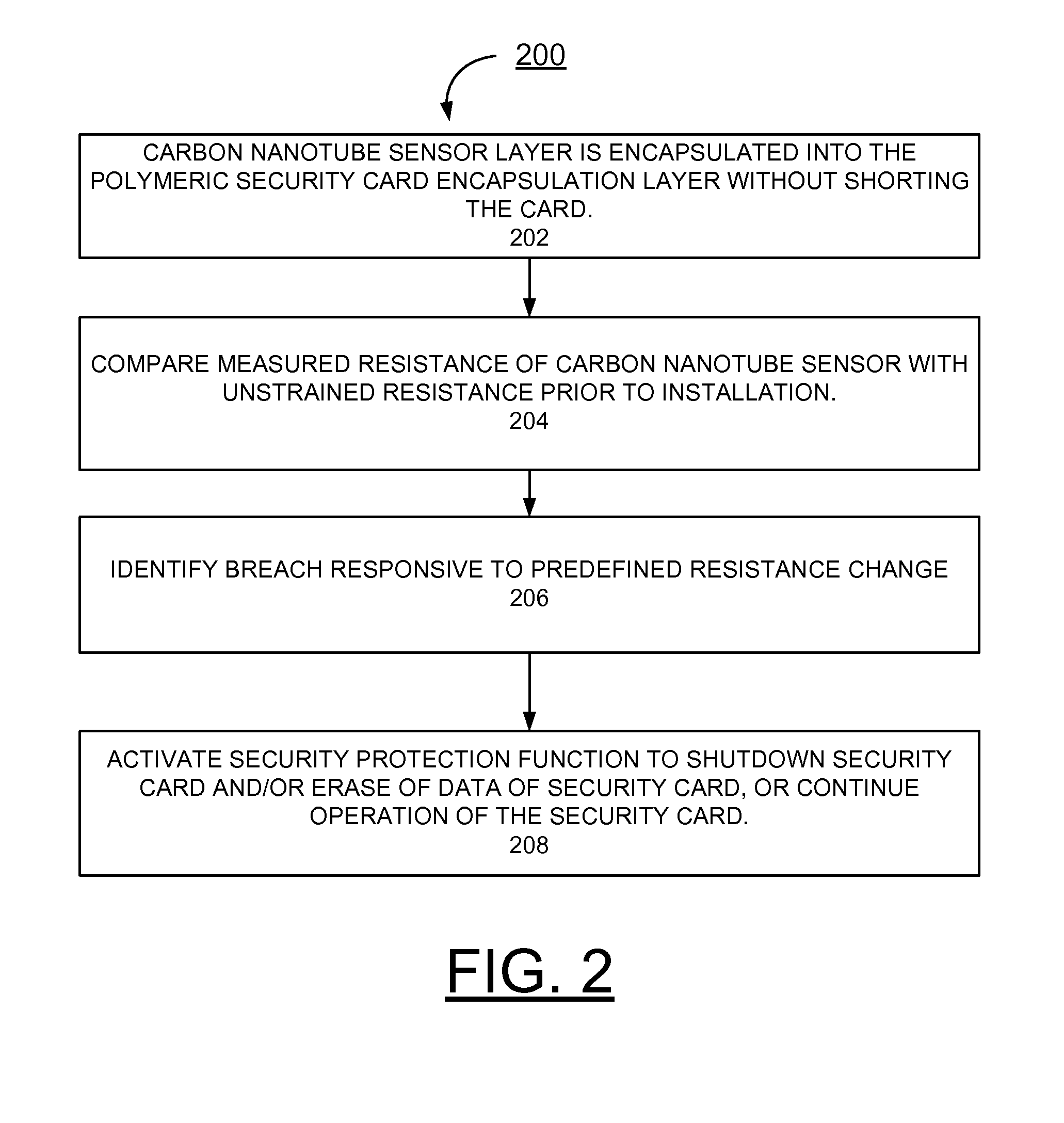Implementing carbon nanotube based sensors for cryptographic applications
a carbon nanotube and cryptographic technology, applied in the field of data processing, can solve the problems of high production cost, many processing challenges, and crypto devices using expensive circuitry mats
- Summary
- Abstract
- Description
- Claims
- Application Information
AI Technical Summary
Benefits of technology
Problems solved by technology
Method used
Image
Examples
example preparation
of Carbon Nanotube Based Sensor
[0021]Having reference now to the drawings, in FIG. 1, there is shown a flow chart illustrating example steps generally designated by reference character 100 manufacturing a carbon nanotube based sensor for circuits used for security protection for cryptographic applications in accordance with the preferred embodiment.
[0022]As indicated at a block 102, carbon nanotubes (single or carbon nanotubes containing a plurality of concentric rings) are mixed in an organic compound, such as, N,N′-dimethylformamide, with the formula (CH3)2NC(O)H, or other solvent / organic compounds known to those in the art which disperse carbon nanotubes in organic media. As indicated at a block 104, the mixture is then filtered, for example, in a preformed shape containing a Teflon filter and dried. After drying, the film is then peeled off the filter and further dried under vacuum and heat for a set time, such as 24 hours, as indicated at a block 106. This is just a single exam...
PUM
 Login to View More
Login to View More Abstract
Description
Claims
Application Information
 Login to View More
Login to View More - R&D
- Intellectual Property
- Life Sciences
- Materials
- Tech Scout
- Unparalleled Data Quality
- Higher Quality Content
- 60% Fewer Hallucinations
Browse by: Latest US Patents, China's latest patents, Technical Efficacy Thesaurus, Application Domain, Technology Topic, Popular Technical Reports.
© 2025 PatSnap. All rights reserved.Legal|Privacy policy|Modern Slavery Act Transparency Statement|Sitemap|About US| Contact US: help@patsnap.com



